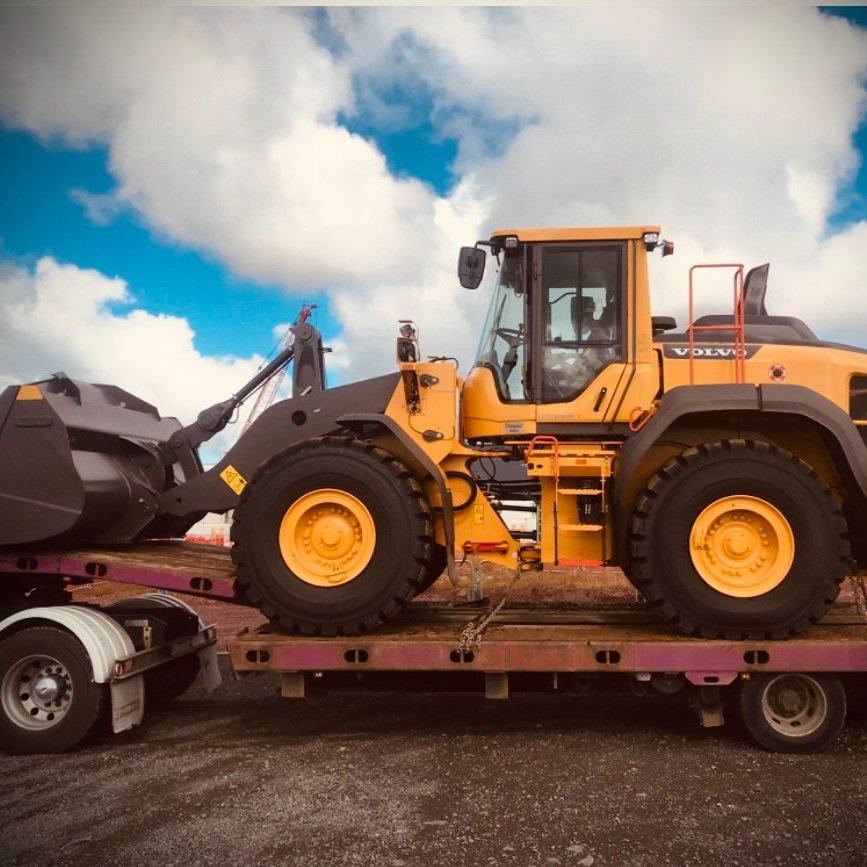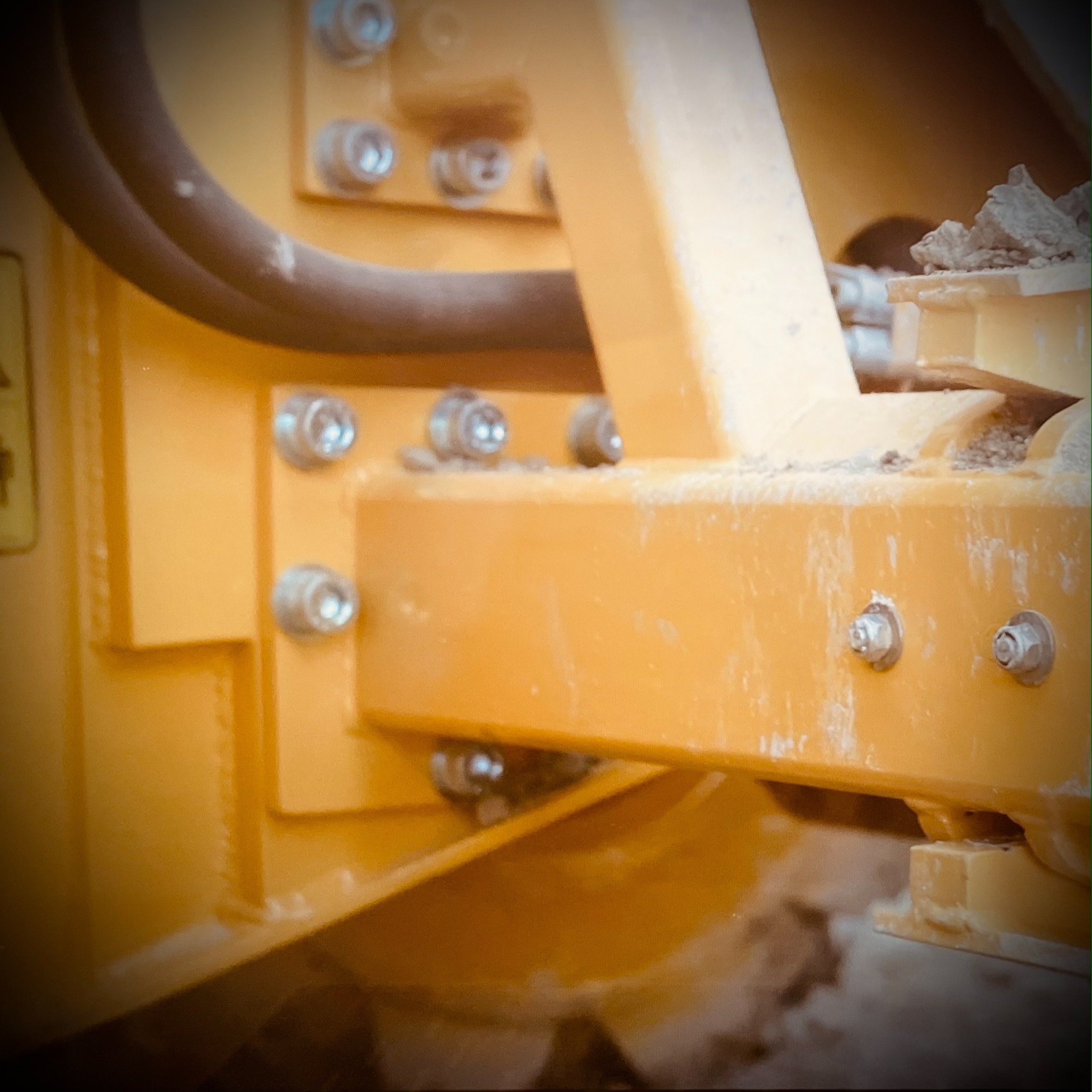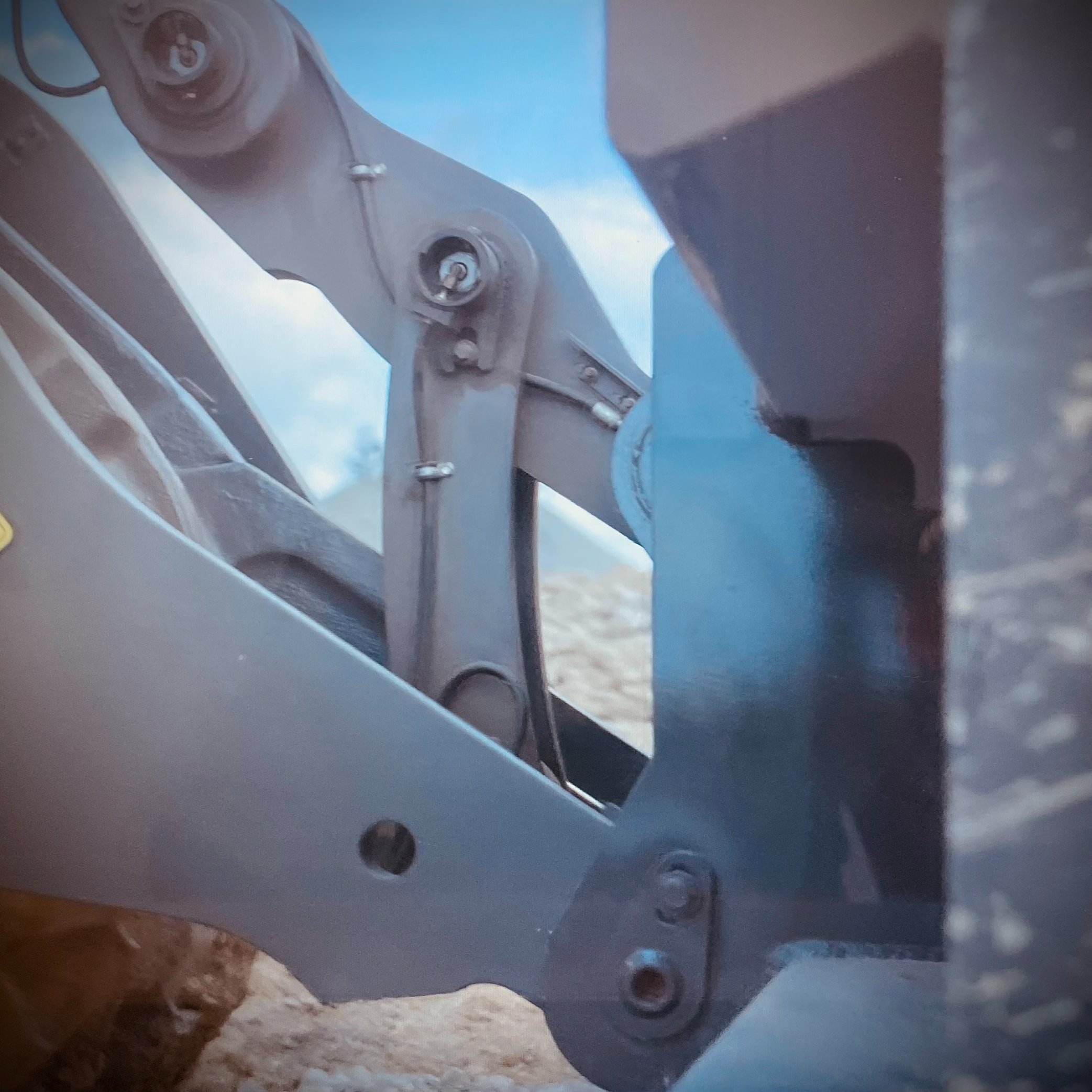5 easy steps to converting your Volvo loader & putting it to work as a compactor!
You will need;
Volvo L150/L180 series F, G, or H loader
Step 1.
Purchase the kit and have delivered to an engineering shop, unpack and remove the compaction conversion parts.
The package includes four compactor wheels, a blade, a cleaner-bar system and scraper frames, all chassis fitting plates, manual and installation plans, bolts, plus the 20-feet side-opening container.
Step 2.
Remove the parts of your loader not required for compaction conversion. Because all the componentry comes strapped-down in a shipping container, attachments currently not in use can be placed back in the container for safe storage ready for swap-over when the next season comes around.
Being containerised, transportation from one construction site to another is simplified regardless of whether the site is across town, at the other end of the country, or even in another country.
Step 3.
Certified engineers, weld on the plates where the kit is fitted, touch up the paint in these areas.
While there’s a ‘first time only’ requirement to fit the three weld plates to either side of the machine. This is a cake walk for expert services and certified staff, who can undertake the swapping in a timely manner. This, in turn, allows transformation between loader and compactor simply a matter of bolt-on/bolt-off.
Step 4.
Bolt-on the compactor wheels, cleaning bar system, and fit the blade.
The feet and cutters on the 1.1-metre-wide rear compactor wheels are designed in such a way as to track in the empty rows of the front wheels, which are approximately 750mm wide, allowing for maximum coverage as the machine traverses the site, either travelling forwards or backwards.
A 25-tonne Volvo L150H fitted with L2C compactor kit will weigh approximately 37 tonnes and have a wider compaction footprint.
Step 5.
Adjust the Volvo boom & bucket height limits.
This allows close compaction up to site assets, unlike other compactors, and optimum visibility.




